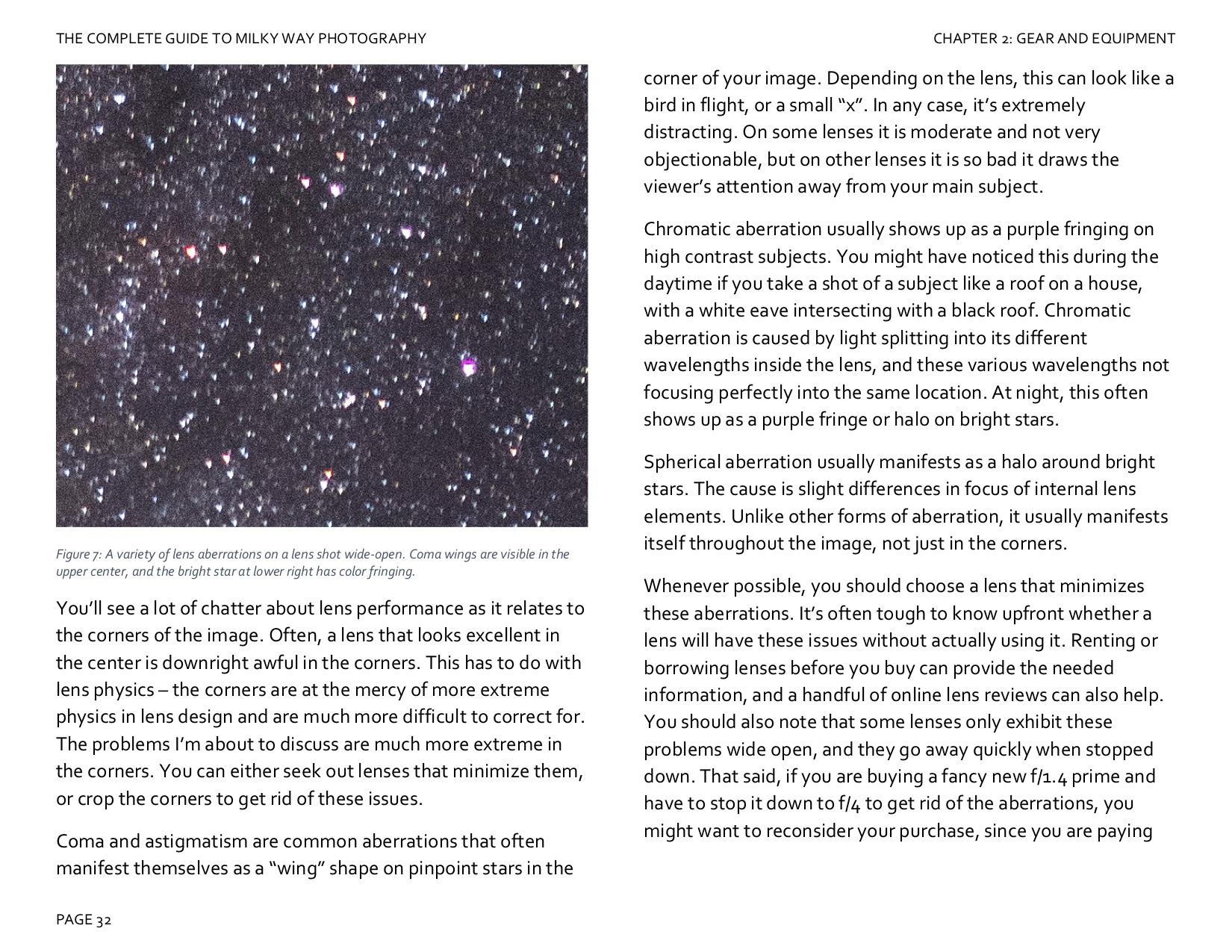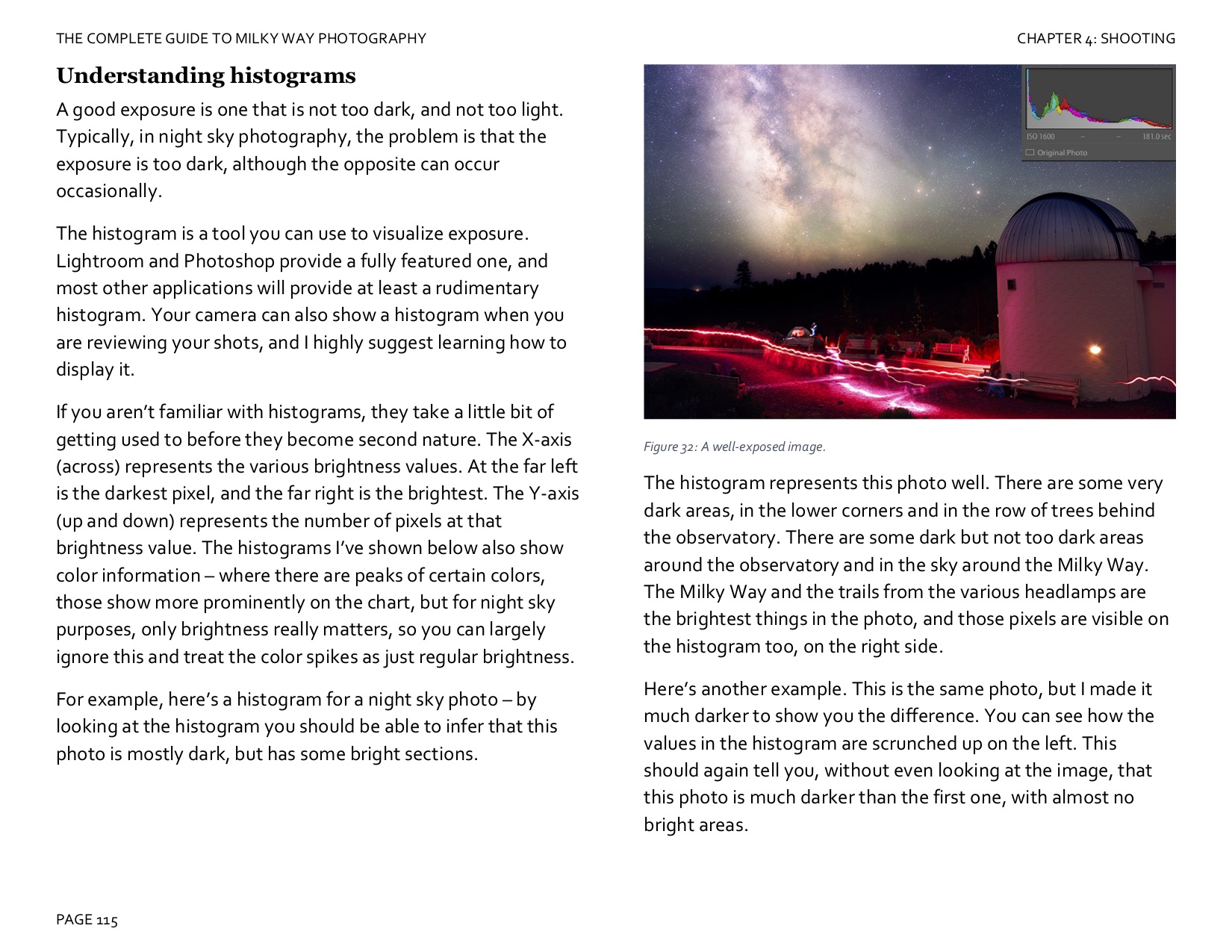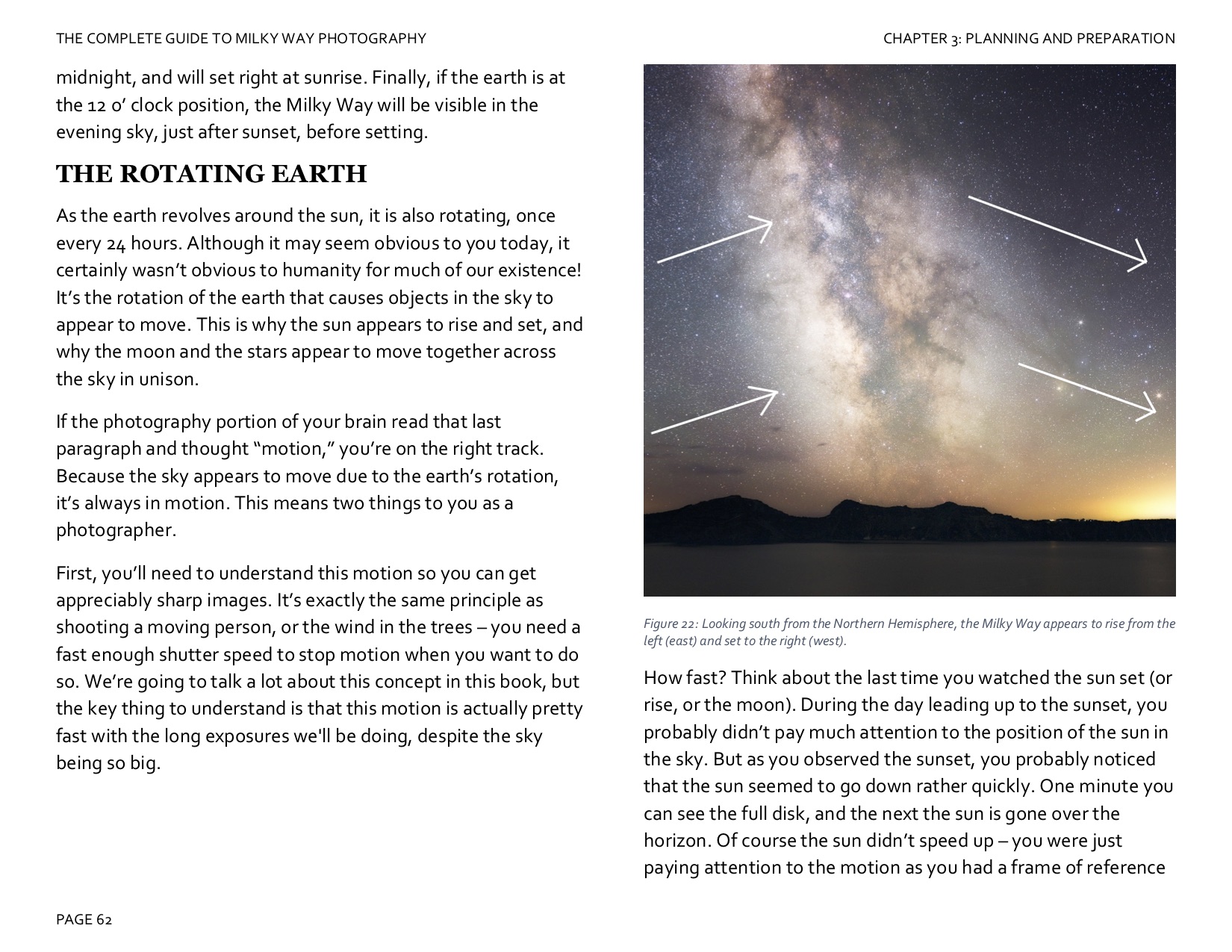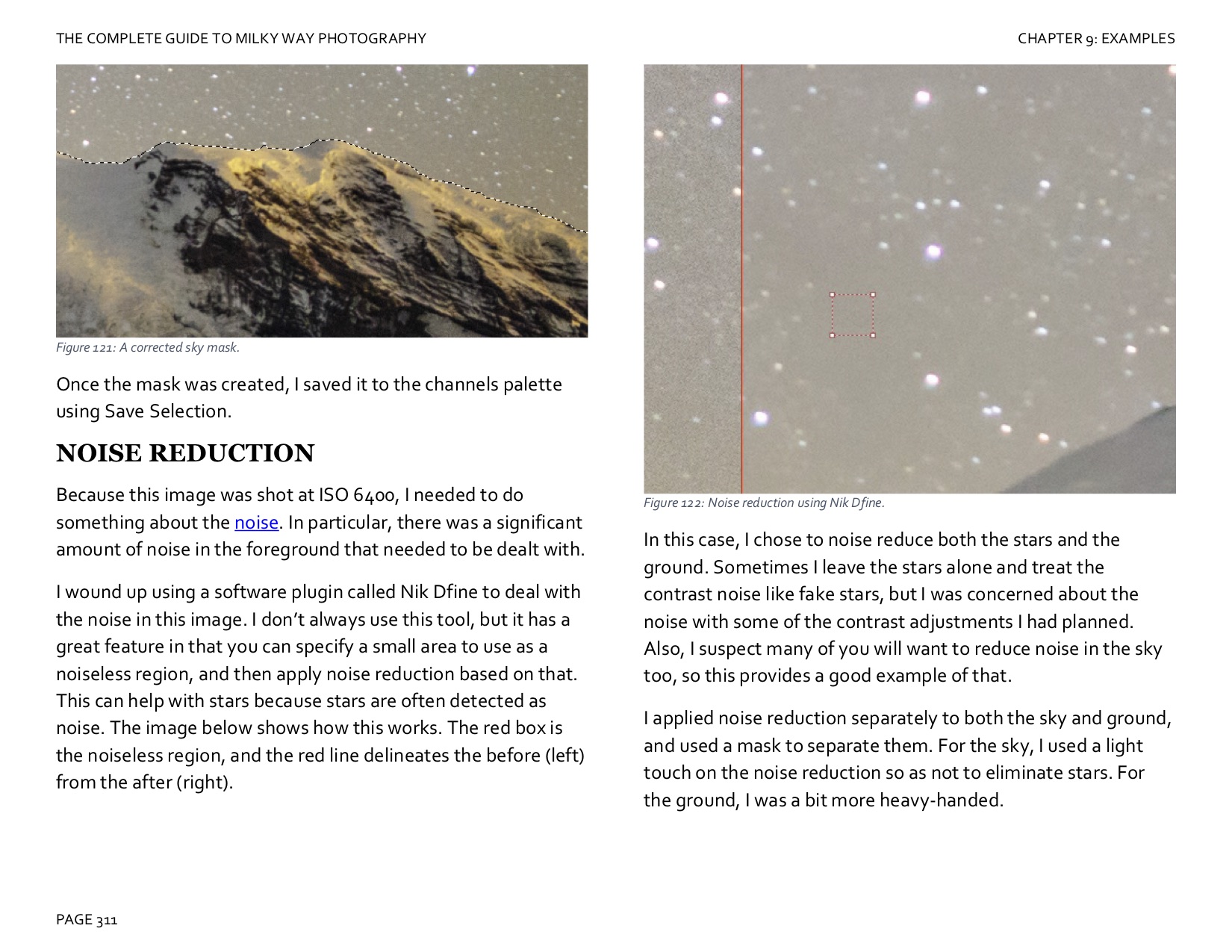
Milky Way Photography Book







The Milky Way is one of the most spectacular objects you can photograph, but capturing it can be challenging. My new 360 page eBook, The Complete Guide to Milky Way Photography (Fourth Edition), can help you make amazing images of the Milky Way! In ten chapters and more than 2.5 hours of video, I cover everything you need to know, including gear, planning, preparation, shooting, and post-processing. To take your images to the next level, I also cover advanced techniques, including composites, stacking, and tracking. The book is capped off with 7 complete examples from capture to final edit, plus a cheat sheet that summarizes the post-processing workflow and other useful information. Last but certainly not least, I’ve included more than 2.5 hours of streaming videos that cover the most important post-processing techniques and the book’s examples!
This book is the result of over four years of writing, editing, and tweaking, not to mention countless trips into the field to shoot the Milky Way over an even longer timespan. I’ve shot Milky Way in all kinds of conditions and locations, and have worked through every problem you’re likely to encounter to produce great images. Everything I’ve learned about this topic is here in the book, ready for you to use to create your own images. Anyone can do this - you just need the right guide!
What’s new in the fourth edition?
The fourth edition of this book is a complete update to the entire book! Not only have I rewritten and edited many sections for clarity, but there’s also some new sections reflecting the latest developments in Milky Way photography. As always, many of the changes are the result of the great feedback I’ve received from you - thank you! Here’s what’s new or changed:
New section on post-processing entirely in Lightroom (no Photoshop required!).
New sections on using Generative AI to heal content in your images, and using AI to select and mask areas of your images more easily.
New content throughout reflecting the current state-of-the-art in camera equipment and techniques.
Completely revised and edited text, along with an updated layout for easier reading.
If you already have a prior edition, follow the instructions in the front piece to receive the fourth edition free of charge!
Why should you purchase this book?
There are lots of resources online about shooting the Milky Way, but I think my book offers something better. Here are my top reasons to purchase my book:
I cover everything you need to know to create great Milky Way images, from start to finish. There are over 350 pages of content here, not fluff. Each topic is thoroughly examined, and I don’t keep any secrets. Everything I know is here in one place, with one voice.
I cover the hard stuff, including composites, stacking, and tracking. There are very few approachable resources on these topics,. Mastering them is difficult and requires a lot of trial and error. I provide step-by-step instructions to make it easy.
I provide 7 complete examples throughout the book, from shooting to final edit, including complex examples of composites and tracked images. In addition, I’ve provided the files for the samples for you to practice on your own, included with the book. Besides the complete examples, I show numerous smaller examples to demonstrate a specific concept or technique.
I provide more than 2.5 hours of video to supplement the text in the book. Although the book’s text is detailed and complete, there are some topics that I think are really enhanced by video. For these, I’ve provided easy-to-follow videos that demonstrate the concept discussed in the book. The videos don’t replace the text, but rather enhance it, and are a great way to reinforce your knowledge. The videos also demonstrate editing the 7 complete examples from end-to-end.
I provide free updates to the book, for life. Whenever a new version of the book is released based on feedback or just new techniques, simply forward me your purchase receipt and I’ll send you the latest copy. You’ve invested in me and my book, and I’m investing in you and your learning.
You’re supporting independent books and my growing family. I think it’s important to support the people that inspire me, and I hope you do too!
Who is this book for?
This is not a book for the absolute beginner photographer. You definitely don’t need to be an expert, but I’m assuming you have some basic knowledge and experience:
You know your way around your camera, and can create images in modes other than auto or program auto.
You understand the exposure triangle, and how aperture, shutter speed, and ISO are related.
You have and use a basic post-processing workflow that minimally includes conversion from RAW using Lightroom, Adobe Camera Raw, Bridge, or similar tools.
You have a basic familiarity with Photoshop, including the basics of selections, masks, layers, and adjustment layers.
If you aren’t completely 100% on all of these topics, it’s okay. The book covers what you need to know. But if any of these topics are completely new to you, you should pause, go learn them, and come back here. You’ll have a lot better time!
What will I learn?
You can see the full table of contents in the book images above, but here’s a quick summary of what you will learn:
The challenges inherent in Milky Way photography
Selecting the correct camera and outdoor gear
Learning how, when, and where to find the Milky Way
Planning, preparation, and field techniques for shooting at night
Focusing correctly every time
Capturing images of the Milky Way in the field
Post-processing your Milky Way images using Lightroom and Photoshop, including tricks to make your images stand out
Building composite images that contain the Milky Way
Shooting stacked and tracked exposures to virtually eliminate noise
And more!
What examples are provided?
The book includes 7 complete examples, including the sample files so you can try them yourself. The examples include:
Two basic Milky Way images, much like the ones you will take on your first few trips out.
An image with people in a dynamic pose that requires a different set of post-processing steps.
A simple composite where the ground and Milky Way shot on a tracking mount are combined to make an amazingly high quality image.
A tracked image where the rotation of the earth creates some extra post-processing steps.
A composite with a foreground shot during the blue hour and Milky Way shot later in the night, requiring color and exposure matching.
A composite created from many images created in different locations and at different times.
These examples cover nearly all situations you’re likely to encounter and are a fantastic learning resource.
I have more questions!
No problem - drop me a note and let’s chat!

